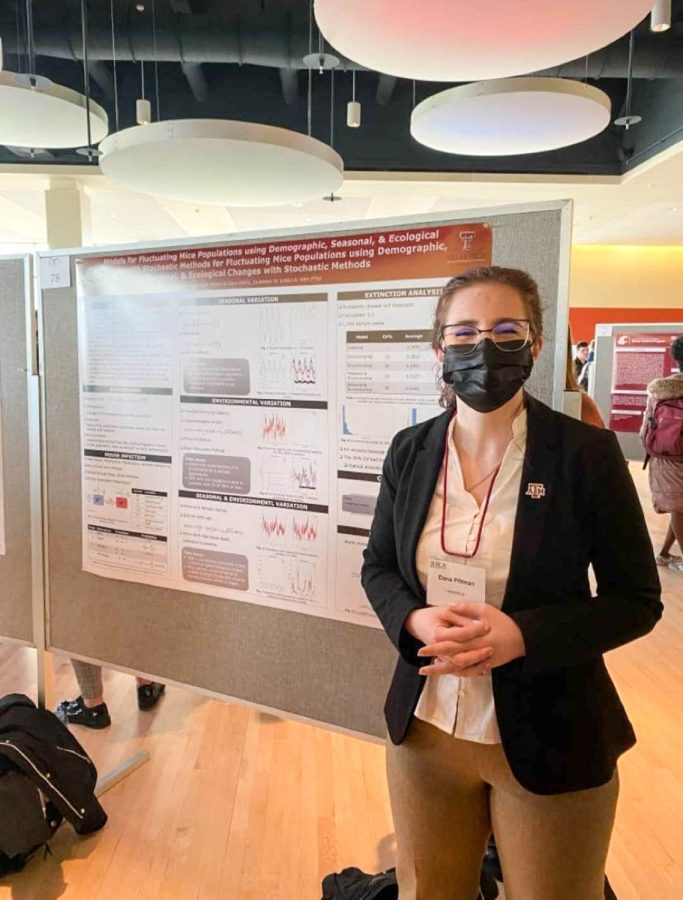New mathematical model depicts mouse populations’ role in disease
Undergraduate research combined two equations to model birth, death rates, probability
Senior biochemistry major Dana Pittman presented her research about mouse populations and hantavirus at the Showcase for Undergraduate Research and Creative Activities.
April 14, 2022
A recent study by senior biochemistry major Dana Pittman has generated an accurate mathematical model for mouse populations, showing how they could impact disease transmission of hantavirus, an infection spread through mouse feces.
Mathematical modeling is a very powerful tool because it allows scientists to investigate natural phenomena without wasting the time and resources needed for actual field studies. This model worked to accurately depict the mouse population by accounting for demographic, seasonal and environmental changes, Pittman said.
This model combined two different mathematical equations — one to examine the birth and death rates of mice and the other to factor in probability, she said.
When combined, these equations accurately model mouse populations, Pittman said. The researchers found this model was accurate because it followed a periodic trend, showing increases and decreases in the population like what we would see in real life. The model accounted for variability in the population, such as a drop in mouse numbers due to cold weather or a natural disaster like a forest fire.
This research is significant because it is the first model to combine birth and death rates with probability, she said.
“This is the first place it’s been documented,” Pittman said.
The implications for this are immeasurable, as this model can be used to look at interactions between multiple species, she said.
“We’ve learned now more than ever that we need to understand [rodent dynamics and disease transmission] in order to mitigate spread,” Pittman said.
This could have drastic impacts on how we understand and address other diseases, such as COVID-19, she said.
Pittman presented her research at the Showcase for Undergraduate Research and Creative Activities at the end of March. She won the Crimson Award, the highest award presented at the event. Pitmann is mentored by Linda J.S. Allen, Texas Tech University P. W. Horn distinguished professor emeritus.
Haley Morris is a senior biochemistry major and wrote this article for her senior capstone course.









